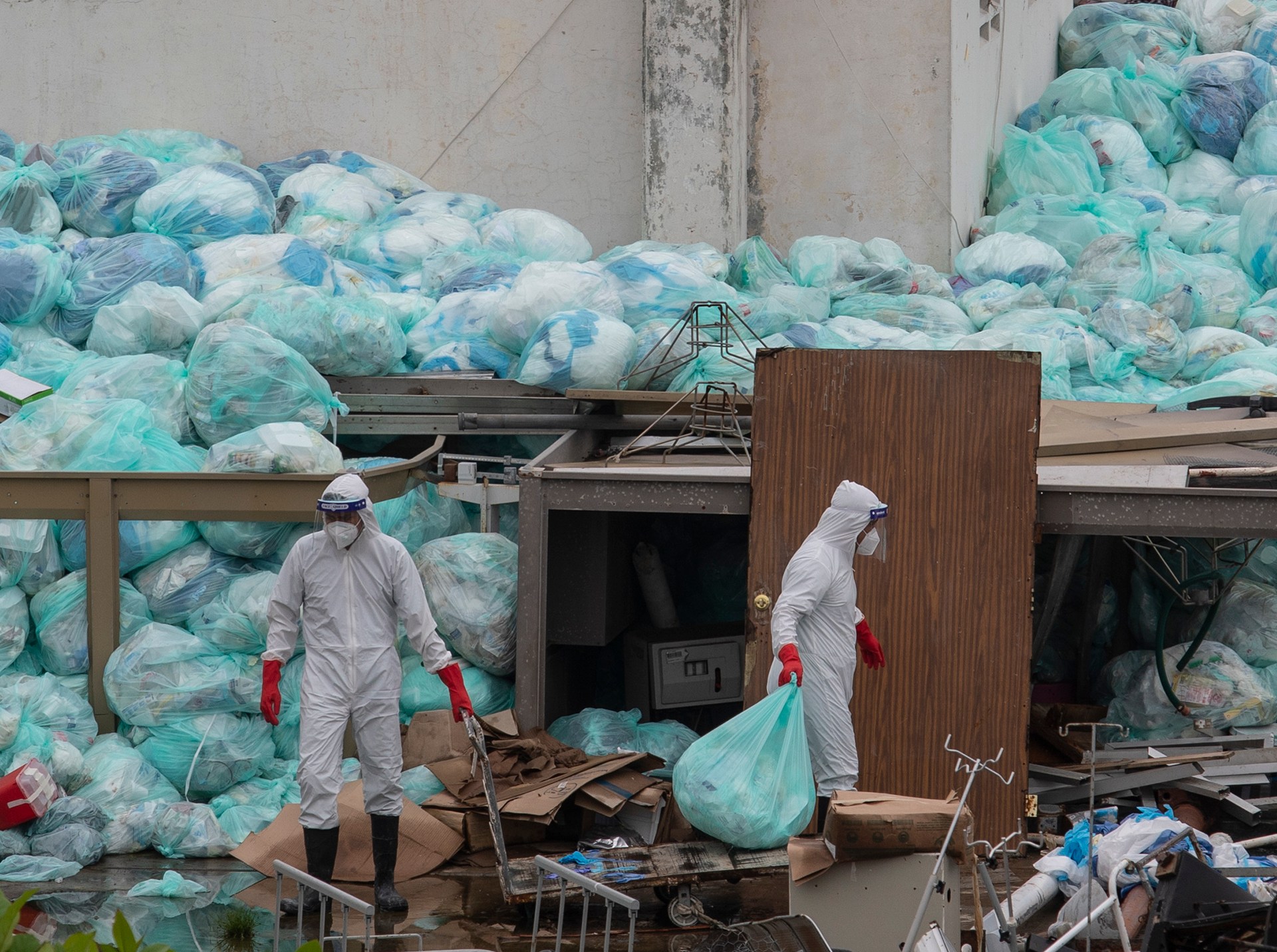Structured Solutions: Simplifying Health Care Protocols with Specialist Medical Waste Disposal
Structured Solutions: Simplifying Health Care Protocols with Specialist Medical Waste Disposal
Blog Article
Discovering Different Waste Disposal Options for a Cleaner Environment
In the search of a cleaner environment, the management of waste disposal has actually emerged as a vital focal factor for lasting advancement. With a plethora of waste disposal options readily available, ranging from conventional land fill methods to ingenious waste-to-energy technologies, the choice of just how we handle our waste has significant effects for our planet's well-being.
Recycling Techniques
Executing effective reusing methods is critical in decreasing waste and promoting sustainability in our environment. Recycling involves the process of transforming waste materials into multiple-use things to prevent unneeded disposal.
An additional essential recycling approach is composting, which entails breaking down natural waste like food scraps and backyard trimmings right into nutrient-rich soil. This process not just draws away organic waste from landfills but additionally creates a valuable source for horticulture and agriculture. In addition, upcycling is a creative recycling method that entails transforming old or discarded products into items of better or worth. By incorporating these various reusing techniques right into our waste administration practices, we can considerably lower our environmental impact and relocate towards a more sustainable future.

Composting Techniques
Effective waste administration practices, such as reusing techniques, lead the way for a cleaner environment, and currently, changing the emphasis to 'Composting Techniques', we check out sustainable ways to disintegrate natural waste for ecological advantage. medical waste removal.
Composting is an all-natural procedure that transforms organic waste, like food scraps and lawn trimmings, into a nutrient-rich dirt modification. The key to effective composting hinges on creating the best balance of environment-friendly materials, such as fruit and vegetable scraps, and brownish products, like dried fallen leaves and twigs. These materials decay with the assistance of microorganisms, damaging down the waste right into useful compost.
There are numerous composting techniques readily available to suit various requirements. Conventional backyard composting involves layering organic products in a bin or heap and consistently turning the blend to freshen it. Vermicomposting, on the various other hand, uses worms to damage down organic matter into garden compost (click here). For those with restricted room, indoor composting systems supply a hassle-free option. By making use of composting techniques, we can decrease the quantity of waste sent to landfills while producing a beneficial product for enhancing dirt and supporting plant growth.
Incineration Pros and Cons
Incineration, as a garbage disposal technique, provides both advantages and drawbacks that merit cautious consideration in the world of lasting waste administration techniques. On the silver lining, incineration can substantially minimize the quantity of waste, minimizing the need for landfill space and possibly decreasing greenhouse gas discharges. Incineration additionally enables the recuperation of energy with the generation of power or warmth, adding to source healing. In addition, the procedure can be utilized to ruin hazardous compounds, providing a safe method for dealing with specific types of waste that might present risks to public wellness and the environment if left neglected.
In addition, the high initial investment and functional prices of incineration centers present financial obstacles, making it a much less economical alternative contrasted to other waste administration approaches. Careful surveillance and policy are essential to mitigate these adverse influences and maximize the benefits of incineration as part of a comprehensive waste monitoring strategy.
Garbage Dump Administration Techniques
Garbage dumps play an essential role in waste management and ecological preservation by providing a control system for the disposal of solid waste products. Effective land fill administration strategies are vital to reduce ecological impacts and ensure the long-lasting sustainability of these garbage disposal websites. One crucial method appertains waste compaction to maximize the usage of offered room within the land fill (click here). By compacting the waste, the volume is lowered, allowing for more waste to be fit in time.
In addition, the application of day-to-day cover practices is essential in lessening smells, stopping clutter, and decreasing the attraction of bugs. Covering the disposed waste at the end of each day assists to contain odors and stop possible environmental contamination. Furthermore, the surveillance of landfill gas discharges and leachate degrees is important in ensuring that environmental requirements are fulfilled and that any kind of prospective threats to bordering communities are lessened.

Waste-to-Energy Technologies
Among the innovative approaches to throw away administration includes harnessing Waste-to-Energy modern technologies to transform strong waste right into functional power sources. Waste-to-Energy (WtE) modern technologies encompass an array of processes that aim to draw out energy from waste products with thermal, chemical, or biological means. This conversion procedure not only lowers the volume of waste that finishes up in landfills but likewise produces important energy resources such as electrical power, warm, or biofuels.
Incineration involves burning waste at high temperature levels to generate warm and electrical energy. Gasification transforms waste into a syngas, which can be used for power generation or chemical manufacturing.
Executing Waste-to-Energy modern technologies can aid minimize environmental problems connected with standard garbage disposal approaches while simultaneously giving a renewable resource resource. Cautious consideration needs to be offered to discharges control and making sure the sustainability of feedstock products for these innovations to be genuinely valuable for a cleaner atmosphere.

Conclusion
Finally, discovering various garbage disposal options such as reusing, composting, incineration, landfill administration, and waste-to-energy technologies is essential for promoting a cleaner atmosphere - click here. Each method has its very own benefits and challenges, yet by using a mix of these strategies, we can work towards reducing the amount of waste that finishes up in garbage dumps and eventually contribute to a much more sustainable future for generations to find
With a wide variety of waste disposal alternatives available, varying from traditional land fill methods to innovative waste-to-energy innovations, the choice of how we handle our waste has far-reaching implications for our earth's wellness. medical waste removal near me.Incineration, as a waste disposal approach, provides both advantages and downsides that merit mindful consideration in the world of lasting waste management techniques.Garbage dumps play an essential role in waste monitoring and ecological preservation by providing a control system for the disposal of solid waste materials. By condensing the waste, the quantity is lowered, allowing for more waste to be fit over time
One of the innovative approaches to squander administration entails harnessing Waste-to-Energy innovations to transform strong waste into usable energy sources.
Report this page